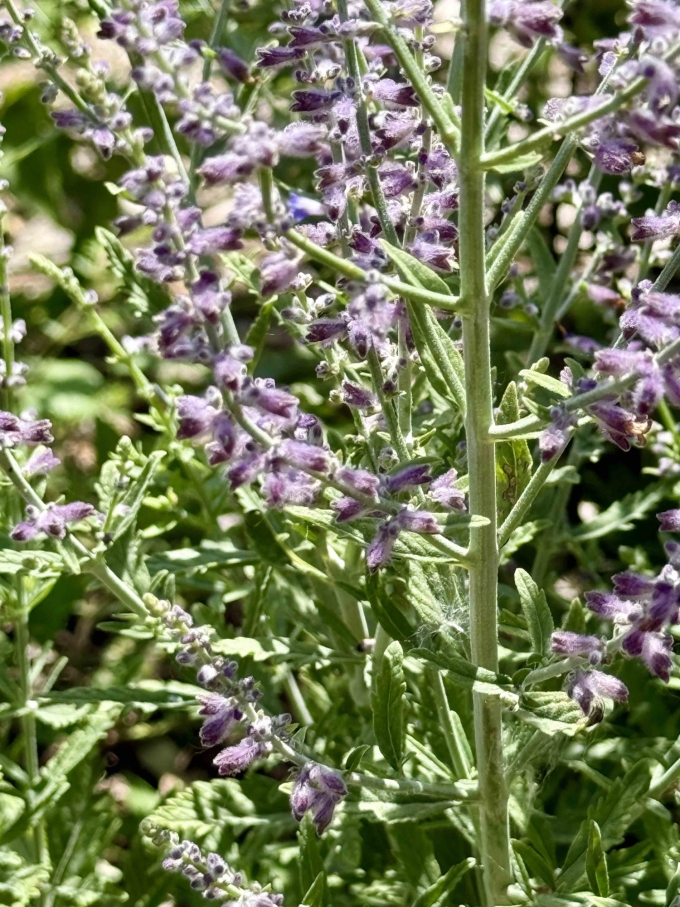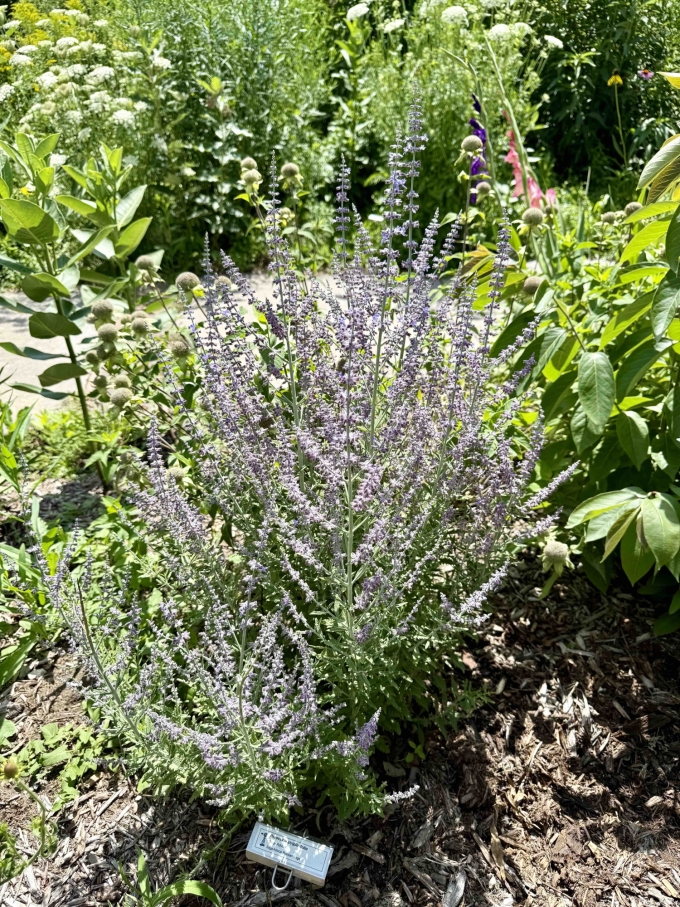Common Name: Sage Advice Russian Sage
Family: Lamiaceae
Plant Type: Woody-Based Perennial / Subshrub
Native Range: Central Asia (Afghanistan, Tibet, and western Himalayas); ‘Sage Advice’ is a garden cultivar
Hardiness Zones: 4–9
Height: 2.0 to 3.0 feet
Spread: 2.0 to 3.0 feet
Bloom Time: Mid to late summer (July–September in Nebraska)
Bloom Description: Long spikes of rich lavender-purple flowers on silvery stems with aromatic gray-green foliage
Sun Exposure: Full sun
Water Needs: Low
Soil Preference: Well-drained soils; thrives in sandy or rocky soil
Maintenance Level: Low
Suggested Use: Borders, xeriscapes, pollinator gardens, mass plantings
Attracts: Bees, butterflies, other pollinators
Tolerates: Drought, heat, poor soils, deer
Notable Features: Stronger purple color than many Russian sages, compact and upright habit, fragrant foliage
Nebraska Growing Notes:
‘Sage Advice’ is a more compact and richly-colored Russian Sage, perfectly suited to Nebraska’s hot, dry summers and challenging soils. It thrives in full sun and tolerates poor, rocky, or sandy soils — ideal for the drier regions of the state as well as urban landscapes with reflective heat.
Its silver foliage and lavender-purple blooms hold up well to Nebraska’s winds and drought once established. In heavy clay soils, ensure good drainage to avoid winter crown rot.
Cut back stems to about 6–12 inches in early spring to rejuvenate growth and maintain its tidy shape. Supplemental water may be needed during establishment but is rarely required thereafter.
Landscape Use:
Excellent for xeriscapes, pollinator gardens, low-maintenance borders, foundation plantings, and mass plantings for texture and color. Pairs beautifully with Echinacea, Rudbeckia, Nepeta, Salvia, and ornamental grasses for a classic prairie-inspired or Mediterranean look.
Caution:
Non-toxic and deer-resistant. Brittle stems can break in high traffic areas, plant away from pathways or handle gently. Not invasive but may spread slightly at the crown over time.
Garden Locations:
Sources:


